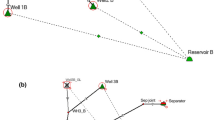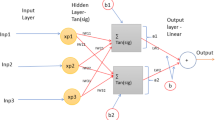Abstract
To reduce damage arising from accidents in chemical processing plants, detection of the incident must be rapid to mitigate the danger. In the case of the gas leaks, detectors are critical. To improve efficiency, leak detectors must be installed at locations after considering various factors like the characteristics of the workspace, processes involved, and potential consequences of the accidents. Thus, the consequences of potential accidents must be simulated. Among various approaches, computational fluid dynamics (CFD) is the most powerful tool to determine the consequences of gas leaks in industrial plants. However, the computational cost of CFD is large, making it prohibitively difficult and expensive to simulate many scenarios. Thus, a deep-neural-network-based surrogate model has been designed to mimic FLACS (FLame ACceleration Simulator), one of the most important programs in the modeling of gas leaks. Using the simulated results of a proposed surrogate model, a sensor allocation optimization problem was solved using mixed integer linear programming (MILP). The optimal solutions produced by the proposed surrogate model and FLACS were compared to verify the efficacy of the proposed surrogate model.
Similar content being viewed by others
References
S. R. Hanna, M. J. Brown, F. E. Camelli, S. T. Chan, W. J. Coirier, S. Kim, O. R. Hansen, A. H. Huber and R. M. Reynolds, Bull. Amer. Meteorol. Soc., 87, 1713 (2006).
S. R. Hanna, O. R. Hansen, M. Ichard and D. Strimaitis, Atm. Environ., 43, 262 (2009).
K. J. Long, F. J. Zajaczkowski, S. E. Haupt and L. J. Peltier, JCP, 4, 881 (2009).
Z. T. Xie, P. Hayden and C. R. Wood, Atm. Environ., 71, 64 (2013).
D. Hamel, M. Chwastek, B. Farouk, K. Dandekar and M. Kam, Proceedings of the 2006 IEEE International Workshop on, 38 (2006).
J. Berry, W. E. Hart, C. A. Phillips, J. G. Uber and J.-P. Watson, J. Water Res. Plan. Man., 132, 218 (2006).
S. W. Legg, A. Benavides-Serrano, J. D. Siirola, J.-P. Watson, S. Davis, A. Bratteteig and C. D. Laird, Comput. Chem. Eng., 47, 194 (2012).
S. W. Legg, C. Wang, A. J. Benavides-Serrano and C. Laird, J. Loss Prev. Process. Ind., 26, 410 (2013).
A. J. Benavides-Serrano, S. W. Legg, R. Vázquez-Román, M. Mannan and C. D. Laird, Ind. Eng. Chem. Res., 53, 5355 (2013).
A. J. Benavides-Serrano, M. Mannan and C. D. Laird, AIChE J., 62, 2728 (2016).
A. J. Benavides-Serrano, M. Mannan and C. D. Laird J. Loss Prev. Process. Ind., 35, 339 (2015).
S. Davis, O. R. Hansen, F. Gavelli and A. Bratteteig, Using CFD to Analyze Gas Detector Placement in Process Facilities. In: GexCon (2015).
R. Vázquez-Román, C. Díaz-Ovalle, E. Quiroz-Pérez and M. S. Mannan, J. Loss Prev. Process. Ind., 44, 633 (2016).
E. G. Gomes, R. de Andrade Medronho and J. V. B. Alves, Gas Detector Placement in Petroleum Process Unit Using Computational Fluid Dynamics. International Journal of Modeling and Simulation for the Petroleum Industry, 8 (2014).
K. Wang, T. Chen, S. T. Kwa, Y. Ma and R. Lau, Comput. Chem. Eng., 69, 89 (2014).
L. Margheri and P. Sagaut, J. Comput. Phys., 324, 137 (2016).
J. Na, K. Jeon and W. B. Lee, Chem. Eng. Sci., 181, 68 (2018).
B. E. Launder and D. B. Spalding, Comput. Meth. in Appl. Mech. Eng., 3, 269 (1974).
GexCon AS, FLACS v10. 7 Users Manual (2017).
O. R. Hansen, F. Gavelli, M. Ichard and S. G. Davis, J. Loss Prev. Process. Ind., 23, 857 (2010).
I. Goodfellow, Y. Bengio and A. Courville, Deep Learning, MIT Press (2016).
Author information
Authors and Affiliations
Corresponding author
Rights and permissions
About this article
Cite this article
Jeon, K., Yang, S., Kang, D. et al. Development of surrogate model using CFD and deep neural networks to optimize gas detector layout. Korean J. Chem. Eng. 36, 325–332 (2019). https://doi.org/10.1007/s11814-018-0204-8
Received:
Accepted:
Published:
Issue Date:
DOI: https://doi.org/10.1007/s11814-018-0204-8




